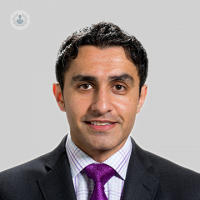When surgery is the solution: Tonsils and adenoids in children
Autore:Tonsils and adenoids are important parts of the immune system during early childhood, helping to fight infections. However, when they become chronically inflamed or enlarged, they can cause recurring health issues that affect a child’s daily life, including breathing, sleep and overall well-being. In such cases, surgical removal may provide a solution.

What are the tonsils and adenoids?
- Tonsils: Located at the back of the throat, tonsils help trap germs that enter through the mouth or nose.
- Adenoids: Positioned higher in the throat behind the nose, adenoids help filter bacteria and viruses from the air we breathe.
These tissues tend to shrink as children get older, but in some cases, their role in the immune system is outweighed by the problems they cause.
When are surgery and removal of tonsils and/or adenoids necessary?
Surgical removal of the tonsils (tonsillectomy) or adenoids (adenoidectomy) is recommended when they cause:
- Recurrent infections: Frequent bouts of tonsillitis or adenoiditis (more than 5–7 times per year) that are not responding to antibiotics.
- Breathing problems: Enlarged tonsils and adenoids can obstruct airflow, leading to noisy breathing, difficulty swallowing, or a muffled voice.
- Sleep apnoea: Blockage during sleep can cause pauses in breathing (obstructive sleep apnoea), resulting in poor-quality sleep, daytime fatigue, and behavioural issues.
- Frequent ear infections: Enlarged adenoids can block the Eustachian tubes, causing fluid build-up and chronic ear infections.
The surgical process: What’s involved in tonsil and/or adenoid surgery?
Tonsillectomy and adenoidectomy are common and safe procedures performed under general anaesthesia.
- Tonsillectomy: The tonsils are carefully removed through the mouth using specialised instruments.
- Adenoidectomy: The adenoids are removed through the nose or mouth without external incisions.
- Combination surgery: In many cases, both tonsils and adenoids are removed simultaneously to address multiple concerns.
The procedure usually takes around 30 to 45 minutes, and most children can go home the same day.
What’s involved in recovery after tonsil and/or adenoid surgery?
While recovery varies, children generally bounce back quickly. Here’s what parents can expect:
- Mild discomfort: Sore throat, difficulty swallowing or a stuffy nose for the first week. Pain relief medication can help.
- Rest: Quiet activities and plenty of fluids are recommended for 7 to 10 days.
- Diet: Soft, cool foods like yoghurt, ice cream or soups are ideal during recovery. Avoid hard or crunchy foods that may irritate the throat.
What are the benefits of tonsil and/or adenoid surgery?
Surgical removal of the tonsils and adenoids can significantly improve a child’s quality of life by:
- Reducing the frequency of infections.
- Improving breathing and sleep quality.
- Minimising ear infections and hearing problems.
- Enhancing energy levels and concentration during the day.
While surgery is not always the first option, it is a highly effective and proven solution for children suffering from persistent infections or breathing issues caused by enlarged tonsils and adenoids. Parents concerned about their child’s symptoms should consult an ENT specialist, who can evaluate the need for surgery and guide them through the process.


